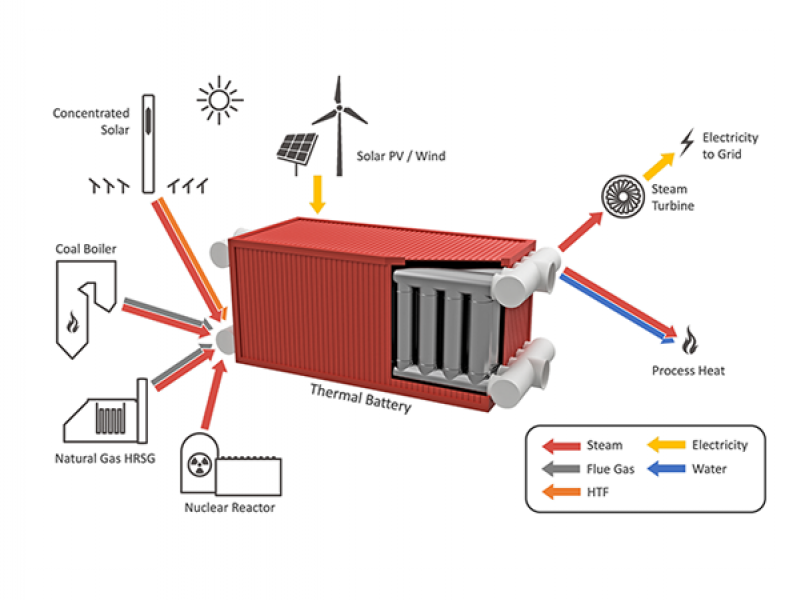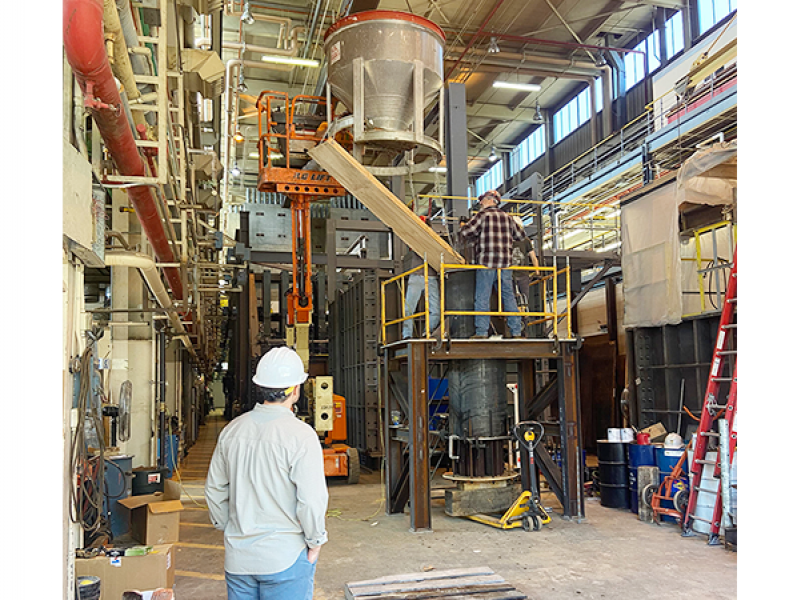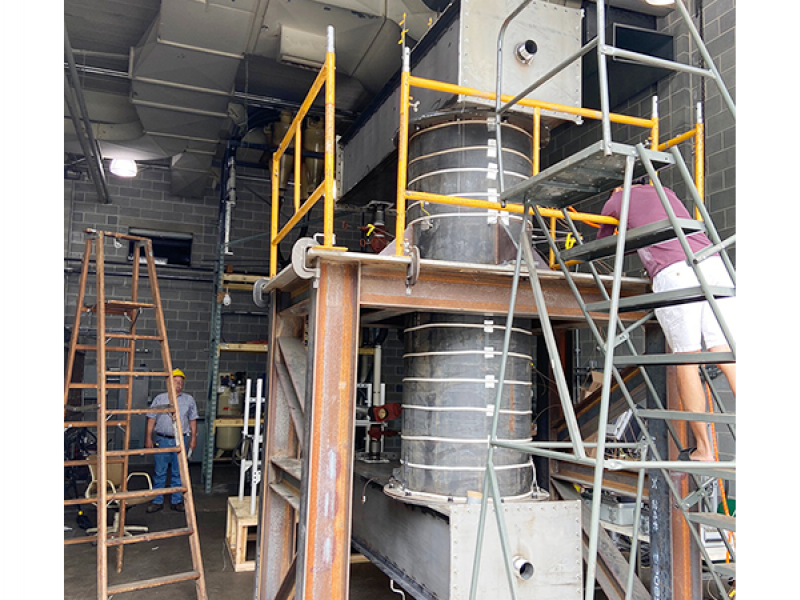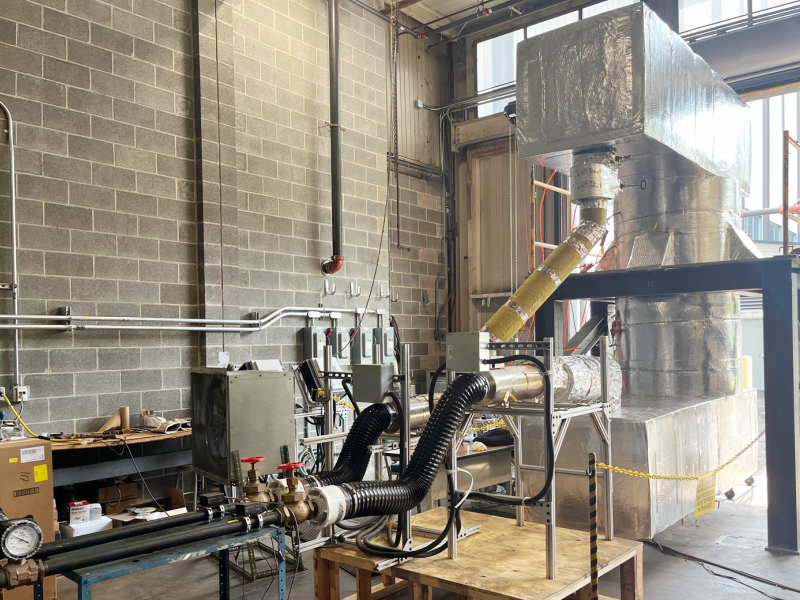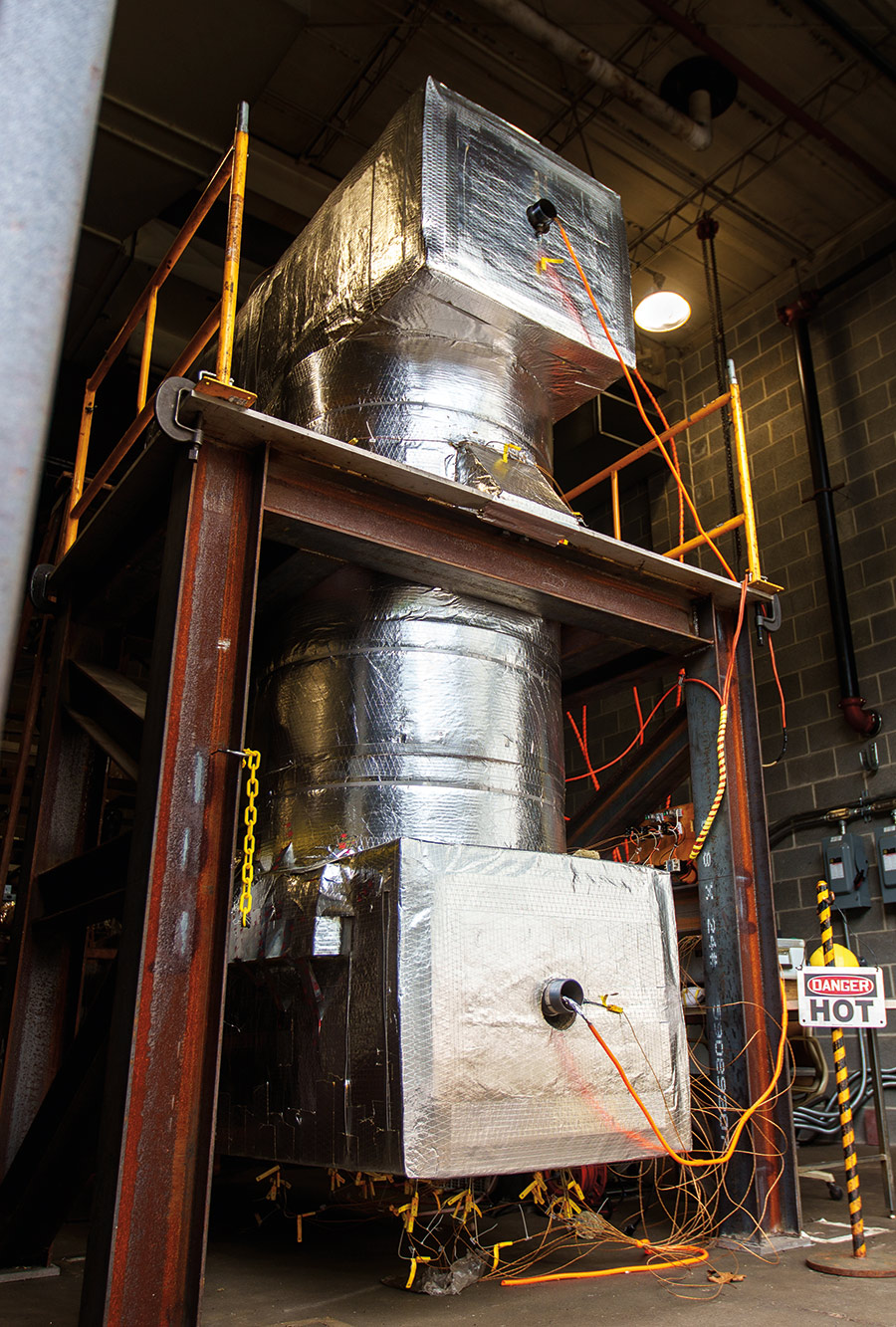A research team from Lehigh University's world-renowned Energy Research Center, with support from the U.S. Department of Energy, has developed a breakthrough thermal energy storage device that just may be a game changer in the renewable energy market.
After years of intense research and development, the Lehigh Thermal Battery (LTB) is scalable and market-ready.
The Lehigh Thermal Battery:
A sea change for renewable energy
The Lehigh Thermal Battery (LTB) charts a novel course in heat transfer and energy storage; it is suitable for decarbonization opportunities in industry and the flexibilization of conventional power plants—and it will spur advancement in the market penetration of wind, solar, and marine renewable energy sources.
The concept is unique and new among heat energy storage concepts, offering the potential for adaptation over a broad range of temperatures, heat transfer media, and operating conditions. LTB combines the best aspects of two well-understood energy capture techniques—sensible and latent—through engineered cementitious materials and thermosiphons in a combination that enables fast and efficient thermal performance at low cost.
The project has just completed a three-year schedule, which included research and development of system components, system design and integration, and integrated system testing at 3, 10 and 150 kWhth in a relevant environment. The 3-kWhth system, consisting of an electrically charged design, was tested at Dominion Energy’s Mount Storm Power Plant in West Virginia, achieving repeatable electrical-to-heat round-trip efficiencies in the mid-70% range.
About the LTB prototype
The 150-kWhth prototype built at Lehigh's Energy Research Center is a fully instrumented 15-foot tall structure containing 22 finned thermosyphons. The 150-kWhth prototype has been tested extensively using compressed air at 480°C, producing an energy-to-energy charge/discharge efficiency of the solid media at better than 95%, uniform temperature distribution in the solid media during charging, and consistent cyclic repeatability—with a very fast energy gradient of the thermal battery of 0.51 kWhth/min during the first hour of discharge.
Scrolll through the images above for a diagram of LTB as well as its construction and final prototype.
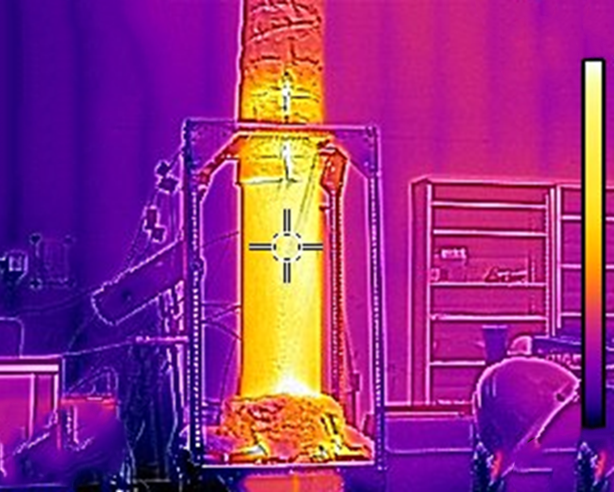
Lehigh Thermal Battery: In the News
In the ramp up to more widespread renewable energy use, thermal energy storage is becoming a go-to solution for enabling power grids to respond to variable supply and demand conditions. When demand is high and solar or wind energy is not available, stored energy could answer the call and keep the United States moving in a greener direction.
Selected media coverage:
• Lehigh University News Center >>>
Interested in LTB licensing opportunities?
Click the button below to fill out a brief form, and we'll get back to you soon!
Lehigh's Office of Technology Transfer (OTT) manages the intellectual property created at Lehigh from faculty research with the goal of enhancing the societal impact of our innovative work. Contact Lehigh OTT at 610-758-5883 or ott@lehigh.edu for more information on licensing technologies developed at Lehigh, and more.
About the Energy Research Center @LehighU
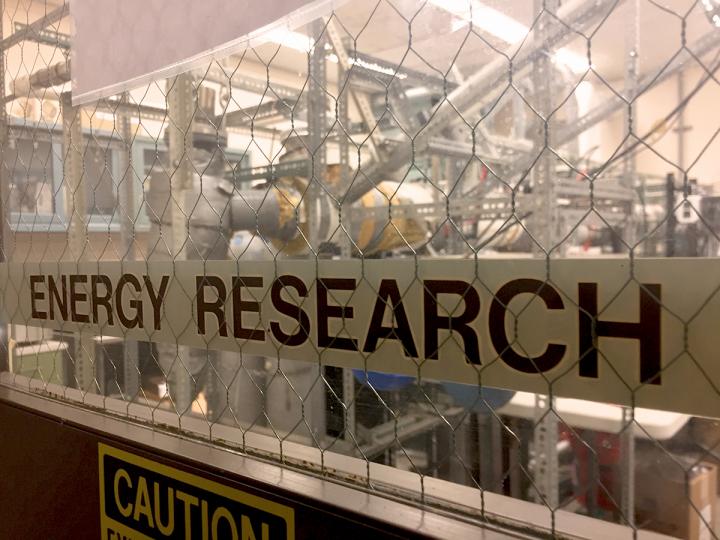
The mission of the Energy Research Center is to find solutions to national and global energy and energy-related problems by collaborating with federal, state, and local agencies; energy businesses; technology developers and suppliers; the research community; and academic institutions. The Energy Research Center accomplishes this mission through its continued commitment to innovative research and development, while recognizing the important link between energy and the environment. The center brings together faculty and professional staff within Lehigh University to conduct research; foster partnerships between government and industry; provide funding, research and educational opportunities to university graduate and undergraduate students; and promote international research collaboration. LEARN MORE >>

